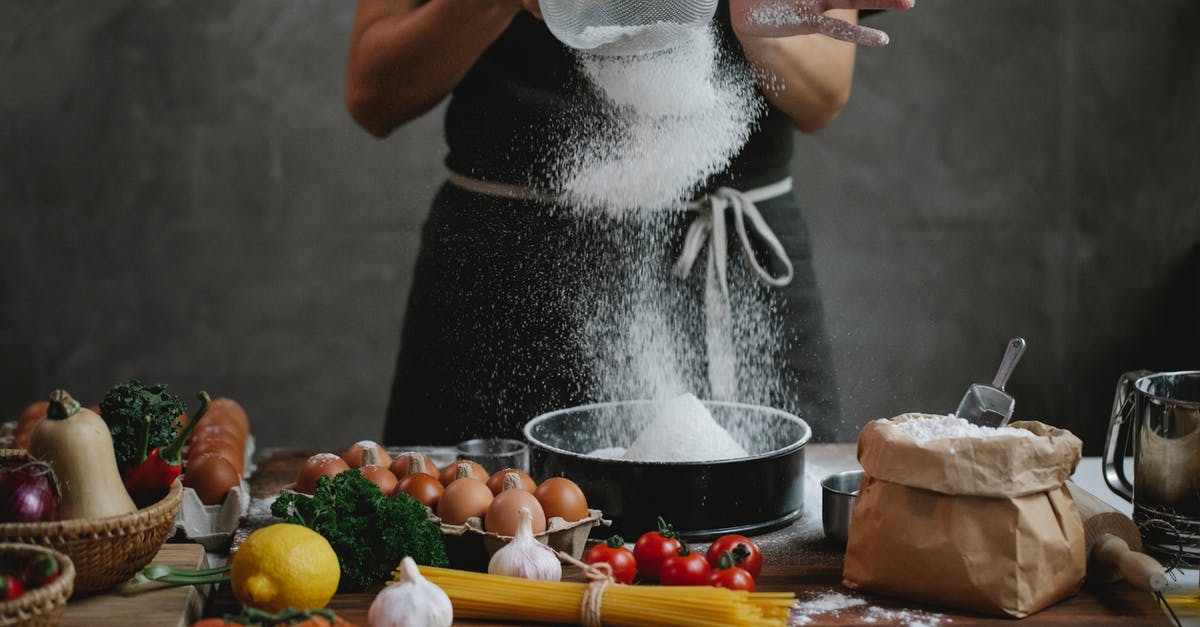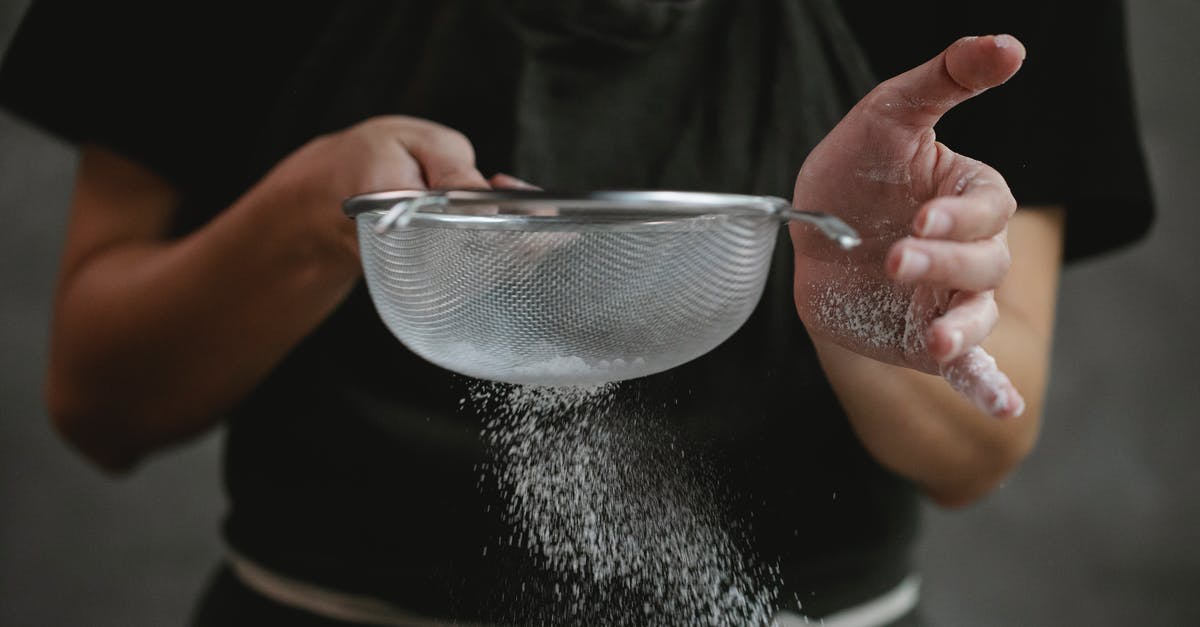How can I make nutritional yeast?

I live in a country where nutritional yeast is not readily available. I'd like to make it. Anyone know how?
Other forms of yeast, such as baking yeast and brewer's yeast are easily found here. I understand these yeasts are essentially the same organism (Saccharomyces cerevisiae?), so I'm wondering if I can't combine yeast—instant baking yeast for example—with some kind of nutritional base like sugar water, let it ferment, dry it out, and "harvest" it.
Best Answer
I have to humbly disagree with SAJ14SAJ (I still have the utmost respect given the breadth of knowledge). Most of the steps you need to perform are regularly used by homebrewers and hobby mycologists to renew or isolate special strains of yeast/fungi that are otherwise unavailable. For instance, if you wanted to isolate the yeast used by Chimay to brew the same style of beer using the same yeast as the brewery, your best option is to culture the yeast from one of their beers. The only major exception with what you would like to do is the addition of drying at the end.
While safety cannot be guaranteed when doing this outside of the lab, following decent sanitary procedures it is absolutely possible to do at home. Some specialized equipment IS required but can be found at your local restaurant store, amazon, or a lab supply store. Basically, be clean, be sanitary, and don't be dumb and you should be fine.
There are 4 essential steps you will need to perform.
- Create a sterile substrate for the yeast to multiply in
- Isolate yeast cells and innoculate the sterile substrate
- Wait for the yeast colony to grow until it flocculates (falls to the bottom of the solution)
- Wash and dry the yeast
First, is create a sterile substrate. You can follow the steps here: https://byo.com/stories/item/434-canning-yeast-starters OR http://www.maltosefalcons.com/tech/starter-made-easy-pressure-cooking-your-starter-wort-ahead-time
I do disagree with their using a hot water canner in this situation. Wort can be either acidic or alkaline, so there is no sure way to know that botulinum spores have been eliminated. I would suggest using a pressure cooker at 15PSI for 15-20 minutes. Once they are cooled, they should keep for up to 1 year.
Next, take a small sample of whatever yeast you are working from (almost definitely s. cerevisiae) and use it to inoculate the cooled starter. The best practice here would be to wash the yeast first, (follow this guide: http://billybrew.com/yeast-washing). Then, mix the resulting washed yeast with a little distilled water, suck into a sterile syringe, and innoculate the starter. At this point, you want to close and shake the starter like your life depended on it. An even better option would be to use a flask on a stirplate with a stir bar. You want the jar to be protected from foreign bodies but still allow air exchange. You can modify the lid by installing an airlock, or if you really want to be avant garde, just remove the lid and use a rubber band to seal the top of the lid with tyvek. Unlike if you were trying to make beer, oxygenation isn't an issue here so the one-way functionality of a normal airlock isn't really necessary. Set it in a cool dark location at around 70 degrees F.
Let the yeast do their thing. After a few days of fermenting, you will see the yeast fall to the bottom of the jar. This is a natural process of yeast called flocculation - the small yeast particles tend to cling together, and eventually they will form large enough clumps that they will fall out of solution. The layers that form on the bottom of the vessel are called "trub" in brewing. It's a mixture of yeast and other undissolved particulates that have fallen out of solution. Once you see this has happened, you can move on to washing the new yeast using the same washing procedure as before. If at this stage you sense any off-smells, throw it out and start over - trust your nose and your eyes here. It should smell yeasty and bready. It shouldn't smell bacterial or sick-sweet.
Once you have the cake of washed yeast, you can place it on a piece of STERILE aluminum foil and place it in a food dehydrator with heat. It should dry into a large cake. This can then be crumbled down to be used as nutritional yeast. The heat should be set at 125-130 degrees, which should critically injure/kill the yeast, deactivating it.
The whole process will take a few days, but all of the steps above are done at home by homebrewers and hobby mycologists currently - there's no reason you couldn't do it yourself. Just make sure you keep everything clean and sterile as much as possible. If it seems like too much of a hassle, I'd look out for mail order sources of the yeast. I will warn you though, that this might not produce a ton of yeast without scaling things up a bit (which is totally doable).
Also in response to some other comments - bakers yeast, brewers yeast - they're all different strains of s. cervisiae. So, same species, different strains. The different strains are specialized at certain things, but can be substituted for one another in a pinch (the results won't be as great, but they'll work). Remember, baking was a byproduct of brewing as far back as Egyptian times, possibly earlier. We've been using s. cervisiae almost as long as we've had civilization. Possibly longer.
Also, fun fact - you follow more or less the same steps any time you are working with fungiculture (growth of fungi). This makes sense considering yeast ARE fungi. With a mushroom, you would take a thick sterile syringe to act as a punch, take a biopsy sample from the stem (pierce from one side clear to the other and then eject the sample), cut off the sides of the sample that were exposed to the outside world, and using the remaining portion the same way you'd use the yeast above to get a mycelial culture. The only difference is instead of using a malt starter like yeast, you use agar.
Pictures about "How can I make nutritional yeast?"



Can we make nutritional yeast at home?
Place your instant yeast into the skillet. Most active dry yeast packets contain about 7 grams each, so if you want to make 1/4 cup of nutritional yeast, pour 6 or 7 packets of active instant yeast into a measuring cup until you have a full 1/4 cup (32 grams). Then, sprinkle the yeast evenly into the heated pan.How do they make nutritional yeast?
Commercial production Nutritional yeast is produced by culturing a yeast in a nutrient medium for several days. The primary ingredient in the growth medium is glucose, often from either sugarcane or beet molasses. When the yeast is ready, it is deactivated with heat and then harvested, washed, dried and packaged.Is there a substitute for nutritional yeast?
Soy sauce or liquid aminos Either one will work to replace nutritional yeast. You may want to adjust the salt in the dish if adding these as they will increase the overall saltiness. Low-sodium soy sauce is a great choice.Can I use regular yeast as nutritional yeast?
Nutritional yeast is not a substitute for active dry yeast, often referred to simply as yeast or baker's yeast in recipes.Make your own nutritional yeast! | How to prepare Nutritional Yeast?
More answers regarding how can I make nutritional yeast?
Answer 2
Found this answer earlier when I goggled how to make nutritional yeast. I haven't tried it, but plan to. According to this post, just heat regular yeast to completely kill it. Then you supposedly have nutritional yeast! (I, too, live in a country where nutritional yeast is not readily available.) http://theprovidenthomemaker.com/1/post/2014/01/make-your-own-nutritional-yeast.html
Answer 3
See: How can I create the equivalent of a fresh cake yeast from my sourdough culture?
Creating concentrated yeast requires industrial equipment, and is not really possible at home.
Answer 4
I have made nutritional yeast with Tom's suggestions, except that I started with a baker's yeast packet (used half a teaspoon) instead of step 1, and didn't see any effect of the washing step on taste (so one could skip step 4). The only problem is I only got a few tablespoons of yeast from that initial yeast and 1 liter of sterilized water with malt. So an expansion of about 6x. I haven't tried to see if I can repeat the cycle with the yeast I grew. I just baked it in the over after I got the precipitate. I wonder if getting more means concentrating it by such means as centrifugation, or just starting with more containers or a bigger container. In any case, I don't understand why SAJ14SAJ thinks it can only be done unsustainably (i.e. industrially).
Answer 5
There maybe a work around of sorts. Don't grow the yeast but rather buy active yeast used for bread and then heat treat it to kill it and make it directly edible. There will some vitamin losses due to heat. It would be helpful if the country had a Costco store, lol, as it known for selling larger size packages.
Answer 6
I´ve made something that tastes exactly like NutriYeast. 1 day 1 cup cashew nut on water 2 days - 2 spoon of wheat on water to germinate, drained and than 2 days more (out of refrigeration) with half cup of water. drain the cashew and mix them with the water (now a dark murky water) of the wheat
than.. 2 or 3 days it out of the fridge to fermentation..
the taste and smell are identical. Perfect to eat with bread :)
Sources: Stack Exchange - This article follows the attribution requirements of Stack Exchange and is licensed under CC BY-SA 3.0.
Images: Klaus Nielsen, Klaus Nielsen, Alex Green, SHVETS production
